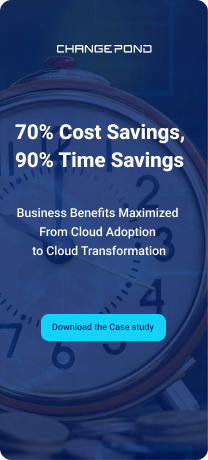Benefits of using
Cloud in non-profit organizations
Why do non-profit organizations (NPOs) need the cloud?
Non-profits face numerous challenges. In recent times, they have seen greater scrutiny, pressure from the public for greater transparency, fierce competition for financing, and accountability for accomplishments. Non-profits have never really been on a level playing field with other groups. They confront obvious limitations. So, undoubtedly, they can benefit from cutting-edge digital solutions, and the cloud, which can help deliver those solutions.
But the benefits of cloud computing technology can be much more. The cloud has become a part and parcel of everyday business in almost all types and sizes of industries. Irrespective of the organization’s objective, the cloud provides ample benefits to its users in terms of accessibility, scalability, agility, productivity, etc.
This denotes that, similar to for-profit organizations, leveraging the cloud provides numerous direct and indirect benefits to non-profit organizations too. In addition to boosting mobility, migrating to cloud-based systems offers several other additional benefits that include:

Remote Access—Productivity & Transparency
Regardless of location, remote access allows NPOs to share data with members, i.e., stakeholders, board members, grant writers, etc. 24 x 7 x 365. Invariably, this boosts productivity and fosters faith in the donors through increased transparency. In fact, “remote access” was mentioned as a distinguishing benefit by more than 60% of charitable companies.
Easy to administer—usage-based pay & lower IT costs
For global nonprofit organizations, based on geopolitical, economic, and natural factors, the demand for resources may increase or decrease. For instance, if there is a flood in a particular country, only that zone will be targeted for fundraising. So, the activities in that particular region increase, and hence the utilization of resources goes up at that particular place and at that particular point in time. Whereas in the region of no adversity or the same region during the period of no adversity, the utilization will be low.
With the cloud, one can easily scale up or down the utilization in that specific location instantly to meet the demand. Therefore, the organization pays only for the amount of resources used. In addition, cloud adoption also optimizes and condenses both the workforce and resources. It makes one crew handling all development and operations possible.
Above all, organizations can get whatever they require at a cost they can afford rather than relying on a small number of resources or only using what is absolutely necessary.
Help to reduce carbon footprints
Nearly all NPOs are concerned with combating global warming. The cloud can assist them in this regard. Cloud computing data centers are substantially more energy efficient. According to a Google Workspace survey, a typical firm could save 68% to 87% of its energy and cut carbon emissions by a comparable amount just by moving to the cloud. In addition, a lot of these datacenters have renewable energy as one of their important sources of energy. In this way, businesses that use the cloud help cut down on carbon emissions.
Increased efficiency
These organizations address region-specific issues and raise funds for them. In addition to this, it also raises funds to address many common problems like poverty, unemployment, malnutrition, etc. To manage both, the on-prem infrastructure needs separate teams and infrastructure at each location. The IT component, however, can be managed by a single team with shared access to cloud storage.
Can swiftly build & modify
The combination of DevOps and containerization with the cloud enables the organization to easily establish itself in new regions. It allows us to create and deploy microsite’s/applications faster in different locales. DevOps accelerates the speed to market. Whereas containerization supports DevOps efforts to accelerate development, test and production cycles through a “create once and deploy everywhere” strategy.
Education
These organizations can also use the cloud to educate and train their staff members. Compared to a traditional LMS, a cloud-based LMS has a number of advantages in terms of how easily staff members may develop course content, upload materials, and deliver courses customized for their particular department or location. Furthermore, it encourages users to offer support and get feedback, and progress can be easily tracked to verify that learning objectives are achieved.

Cloud computing provides unparalleled security
Nonprofits exploring cloud migration options are often concerned about the security of the organization’s financial and donor data. Those concerns are crucial, especially because a data breach may not only result in financial loss but can permanently damage an organization’s reputation. This is the reason why cloud service providers prioritize safety and with the following precautions:
Third-party cloud service providers have robust and reliable threat intelligence mechanisms. These safety protocols enable them to promptly recognize and neutralize threats before they transform into more serious issues.
 Identity and Access Management (IAM) - IAM systems ensure that the right people have access to your data through systems that identify, authenticate, and regulate access to all IT resources.
Identity and Access Management (IAM) - IAM systems ensure that the right people have access to your data through systems that identify, authenticate, and regulate access to all IT resources.
 Encryption - Encryption encodes your data in an unintelligible format while it’s being transferred, shared, and stored.
Encryption - Encryption encodes your data in an unintelligible format while it’s being transferred, shared, and stored.
 Physical security - Along with technological measures, cloud data centers have stringent physical security measures in place that regulate access to the building and any equipment, in addition to technological safeguards.
Physical security - Along with technological measures, cloud data centers have stringent physical security measures in place that regulate access to the building and any equipment, in addition to technological safeguards.
To summarize, Non-profit organizations today strive to ramp up funding for their primary goals, lower operating expenses, and eventually improve operations. The main conundrum is how to increase effectiveness without going over budget. Cloud comes as the most appropriate choice. Though the migration is motivated by a cost factor, cloud solutions are more reliable and versatile than ever before and offer integrated solutions tailored to your organization’s needs.
In a nutshell, the cloud may offer your non-profit the cost-saving and cutting-edge, integrated solutions it needs to succeed. These advantages have led to a massive increase in Cloud adoption across many international Non-profit organizations.


